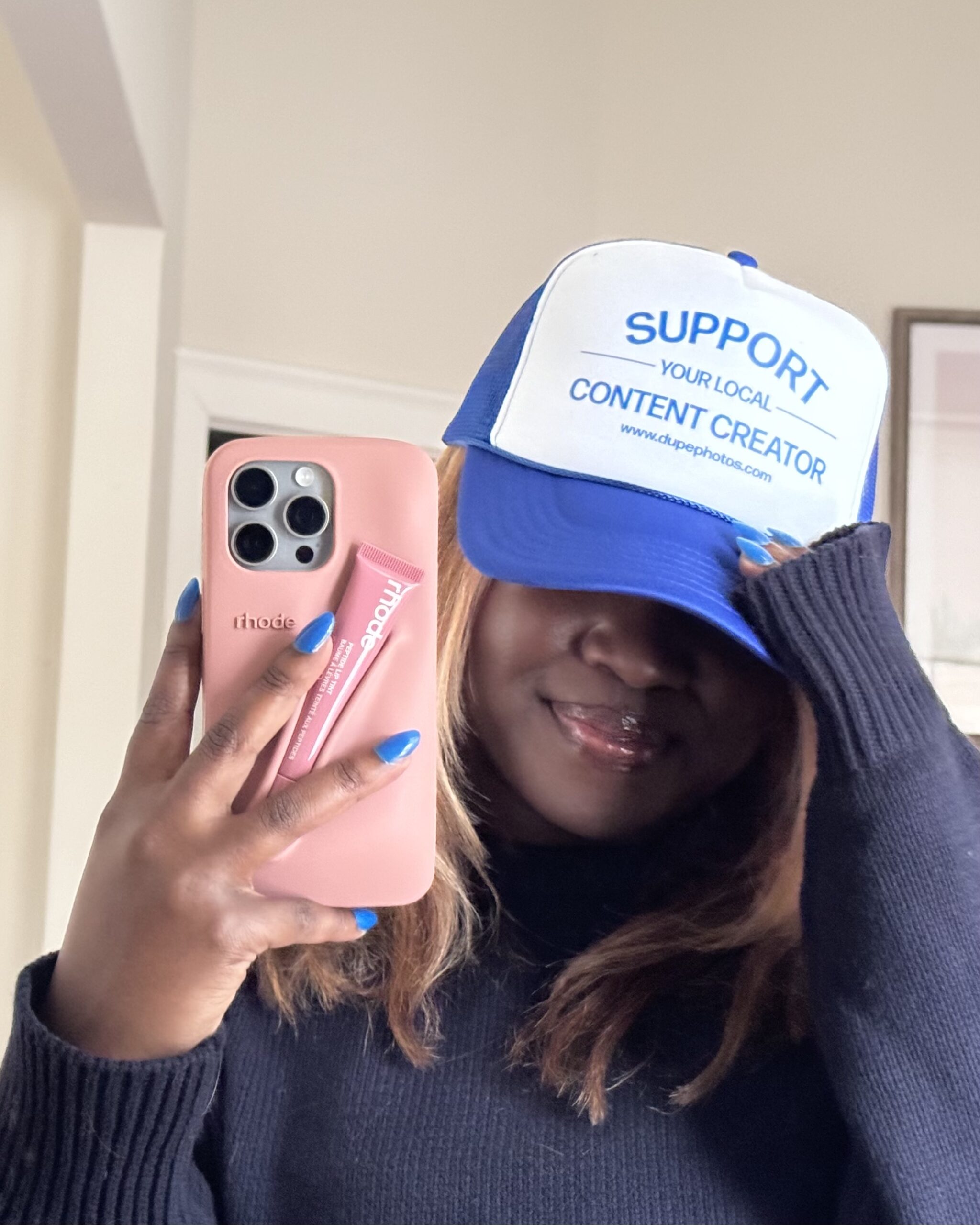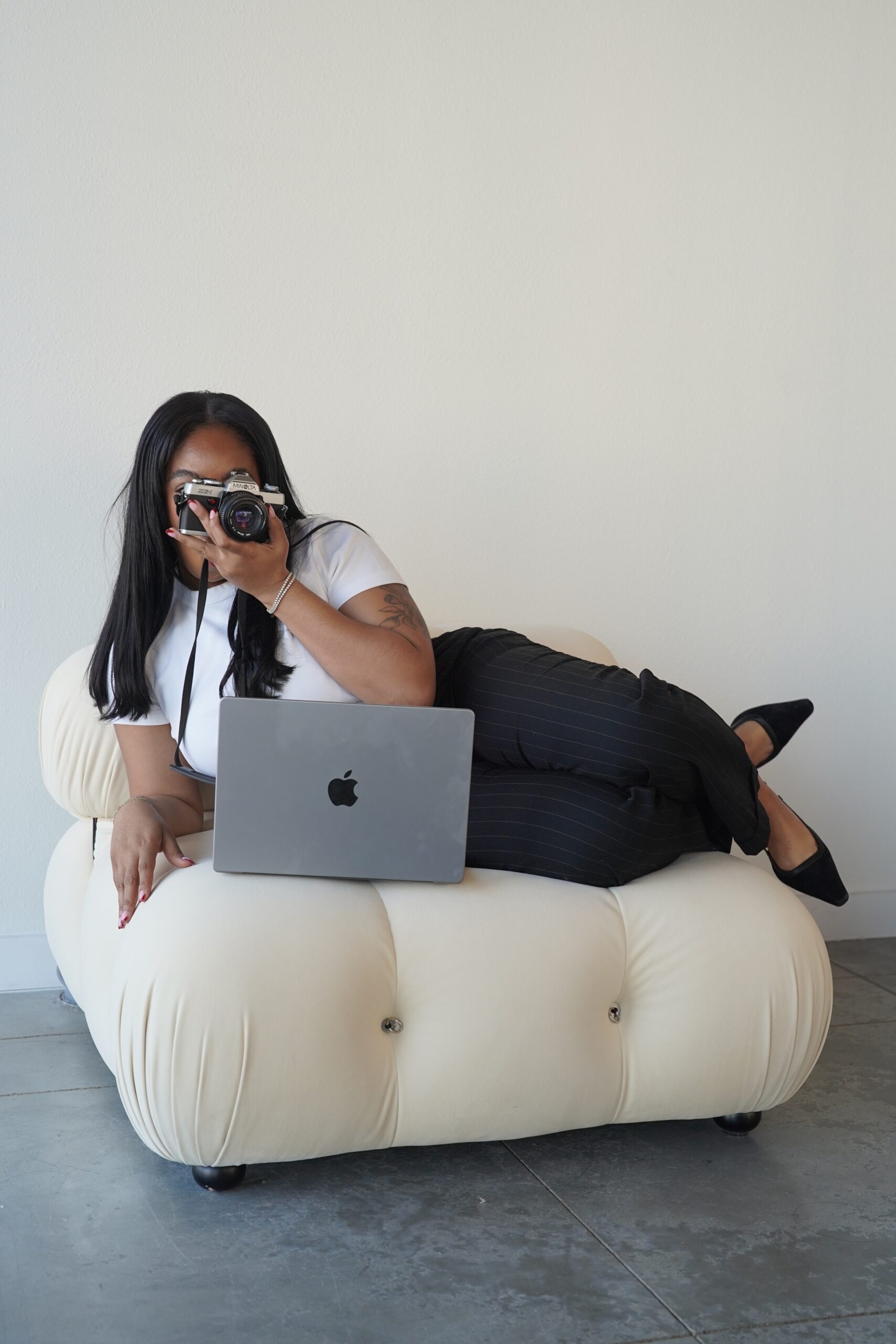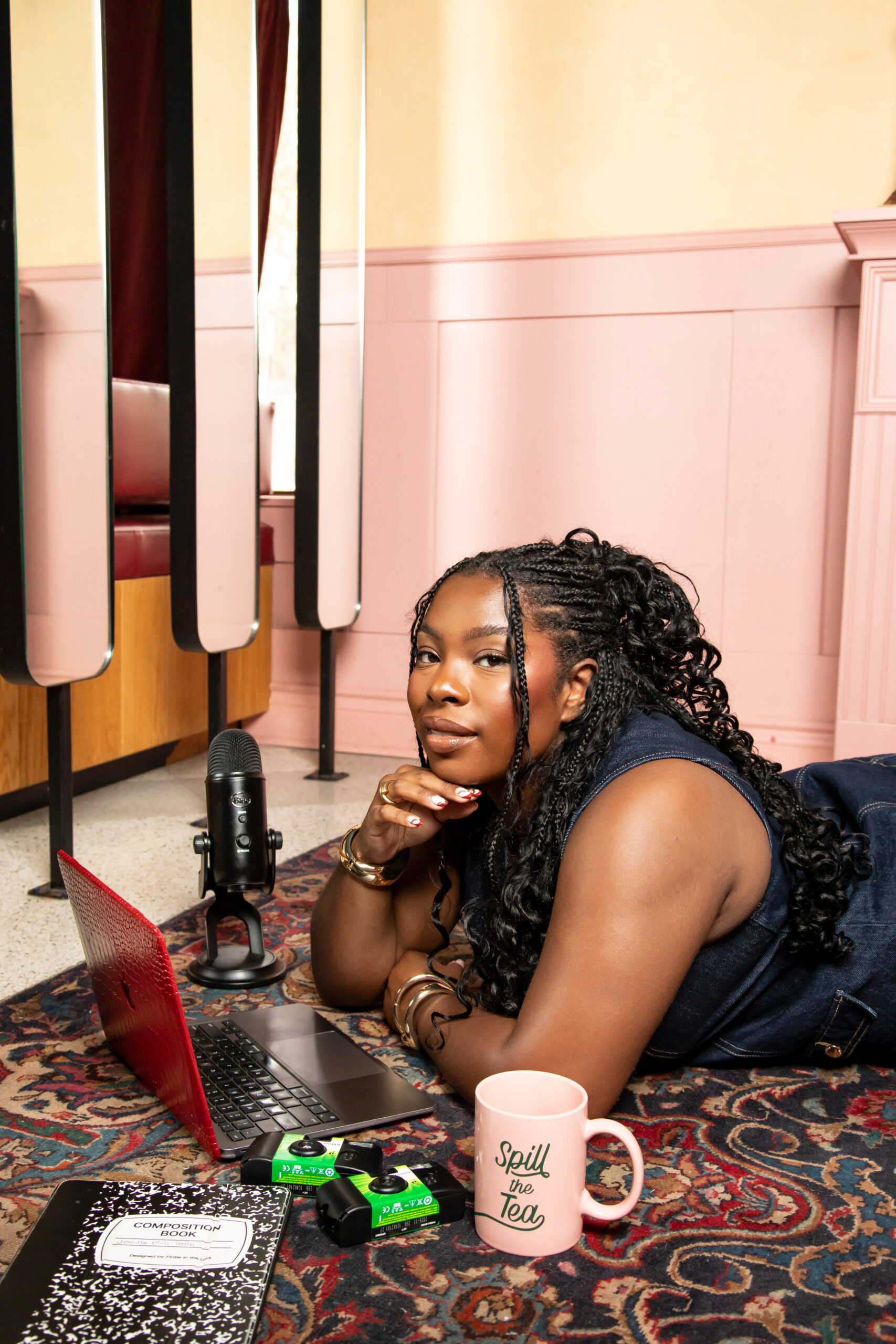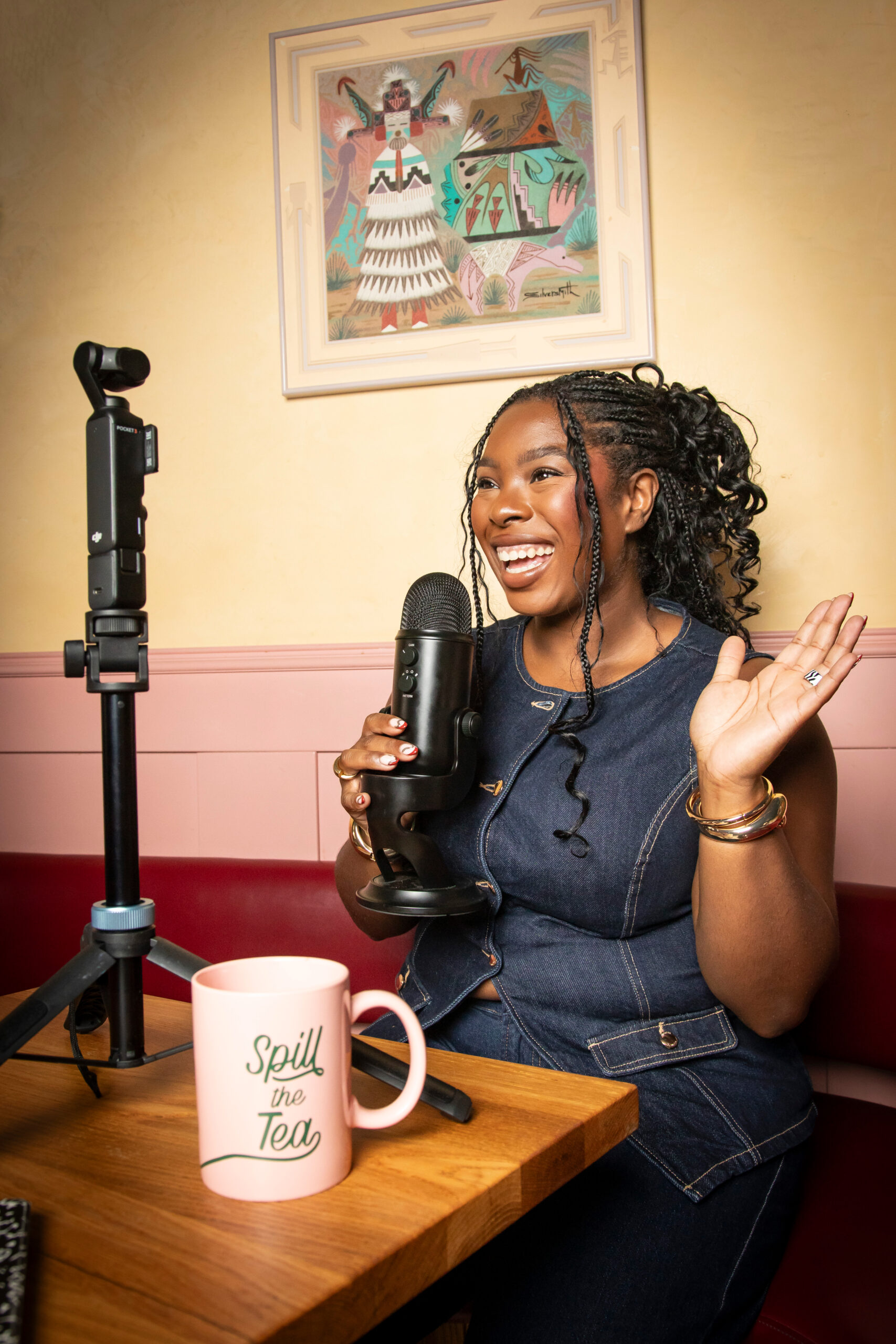HEY FRIEND!
I'm jemilla!
In the past 4 years, I’ve cut my teeth strategizing & writing award-worthy, revenue-increasing, results-snatching copy. And what really lights my fire is writing for woman-owned and BIPOC-led brands. I’m talkin’ the first day after a braiding appointment type of excited! Energizing them to go big with their bold ideas so that when launch time happens, the world thinks “OMG FINALLY, I’ve been waiting for something like this.” And giving them the tools to diversify the market.
about me
services
Your Complete Brand Voice Checklist
January 9, 2025
Let’s talk brand voice, babes. According to Lucidpress, consistent brand presentation across platforms increases revenue by up to 33%. Yet most businesses are out here with half-baked brand guidelines that barely scratch the surface.
You might have a basic brand voice guide (and if you don’t, grab this free workbook), but if you’re still struggling with how to actually sound consistent across platforms, or your team’s writing whatever feels right, you’re missing crucial pieces of the puzzle.
Think of this checklist as your brand voice glow-up guide. I’m covering everything from voice of customer research to cultural relevance — all the elements you need to transform your brand voice from basic to booked and blessed.
The Foundation
Brand Voice Guide
Your brand voice guide is a bible for how you should sound wherever you communicate — on social media, in emails, at speaking events, all that jazz. The brand voice guides I create for my clients have 13+ elements (Exhibit A)


But not every brand voice guide needs to go all out! At it’s most bare, your brand voice guide should include your brand voice, tones of voice, writing guidelines, and how to use your brand voice in different settings.
Your brand voice is the verbal representation of your brand personality. Your brand tones of voice are the emotions and mood you verbally communicate, which can change depending on what you’re talking about and where — but still keeping the brand voice clear. To make sure you always sound that way, writing guidelines keep you on track with dos and don’ts for your brand voice. And how you can see what that looks like is with a tone of voice matrix of copy examples.
Audience Research
- Voice of customer data
- Cultural context
- Language preferences
If you think your brand voice is all about you, think again, babes! We’ve all talked to someone that rubs us the wrong way, right? Well, the same thing can happen if you craft a brand voice without considering your target audience.
You need voice of customer data to see the words and phrases your target audience uses. This’ll be the difference between saying something that completely goes over people’s heads vs. making everything clear and easy to understand for your target audience.
Cultural context is also a big factor, too — whether that be the racial community your target audience is largely a part of, or the social groups they’re in. If you say something that goes against everything they stand for, you’ll ward off your dream clients. But if you take their culture into account (AUTHENTICALLY, at that), you’ll make your target audience feel seen, heard, and respected.
Plus, language preferences — like cuss words vs. clean mouth, and acronyms & emojis vs. full and complete sentences — will affect the way you communicate with your people.
Competitor Analysis
You don’t want to be in bed with too many people, but your competitor should get a spot on the pull-out couch — at least when it comes to your brand voice. What your competitors do shouldn’t dictate everything you do, but it will help you figure out:
- Where you stand in the market compared to them, and what makes you special
- How you can communicate that authentically, while appealing to your target audience
- What opportunities to explore, so you can close any gaps that make your competitors in a better position than you
Now let’s break it down a little further
Voice Definition
- Primary traits
- Secondary characteristics
- Expression guidelines
Language Guidelines
In order to sound consistent and like the unique brand you are, you need a few things:
- A dictionary of words and phrases that your brand uses all the time that are distinct and memorable
- Forbidden phrases that will trip people up if you were to use them
- Grammar preferences, writing rules, and formatting standards — like if you like to use commas instead of M-dashes, or whether you should use simple present tense or present progressive tense, or if you absolutely loathe exclamation points but will do ALL CAPS all day.
Tone Variations
Now this is where the tone of voice matrix comes into play. You’ll need an examples library of:
- Platform-specific copy so you know how you should sound on social media, in your email newsletter, on your website, or guest speaking on a podcast. You can even create templates for content that you often repeat or share
- Situation-based copy that show you how to talk about things like your offers, your target audience’s current situation, etc. — and hit every tone of voice on the head
- Copy examples that show you how to have emotional range — because you don’t always want to sound sassy, or rebellious, or informative. You’ve gotta switch it up!
Cultural Elements
In order to appeal to maintain cultural context, your brand voice guide should have:
- Reference points — e.g. the Me Too movement, the Racial Reckoning of the 2020s, the legalizing of gay marriage, The cookout, etc.
- Inclusive language — e.g. Reclaiming my time; Nevertheless, she persisted, etc.
- Community values — e.g. DEI, Climate Justice, Creativity, etc.
Now comes the nitty gritty
Quality Control
If you have a team of people writing different stuff for your brand, there should be a review process, consistency checks on the regular, and feedback loops for continuous improvement.
Platform-Specific Guidelines
Most of the guides I created for my clients was for their brand as a whole — it had all the copy examples they’d need for different platform so they could see their brand voice in action.
But when I created a brand voice guide for Deeply Rooted Studio’s group coaching program, that was different. Because it was sales copy voice specifically for the Deeply Rooted Club.


So, if you’re writing your website copy and need a brand voice guide so you sound consistent on every web page, or are onboarding a social media manager and need to prep them to sound right on the clock up, or if you want to sound more like a smarty-pants in the inbox, then you’ll need platform-specific guidelines.
Situational Guidelines
How should you sound when replying to a support ticket? Or when one of your users suddenly had their entire content calendar deleted (that happened to me once, SCARY STUFF)? Or when one of your course members makes a huge win and needs all the praise?
That’s where situational guidelines come in, helping you communicate well and authentically in your customer service, crisis communication, celebrations and announcements.
Measurement & Refinement
How do you know your brand voice is giving what it’s supposed to give?
- Success metrics — like increase in aligned leads, higher conversion rates, and more engagement — are one way to tell
- Feedback collection — ask the people what they think, and what they want!
- Update process — hit up your go-to messaging expert for a brand voice revision
Next Steps
Do an audit to see if your copy aligns with how you actually sound, how your target audience likes to be spoken to, and if it does everything it’s supposed to do (read: everything I mentioned above).
If it is, YAY! If it’s not, I’m here to help. You can either:
- Download my free Brand Voice Guidelines Workbook
- Book a free 20 min. Pick My Brain session to ask my opinion
- Book a 90-minute intensive to get some swipe copy examples for your social, email, or website content
- Book a down and dirty (and uber intensive) Brand Voice & Messaging Development service if you need to completely overhaul how you communicate or you’re starting from scratch [CTA to Brand Voice Development Service]






